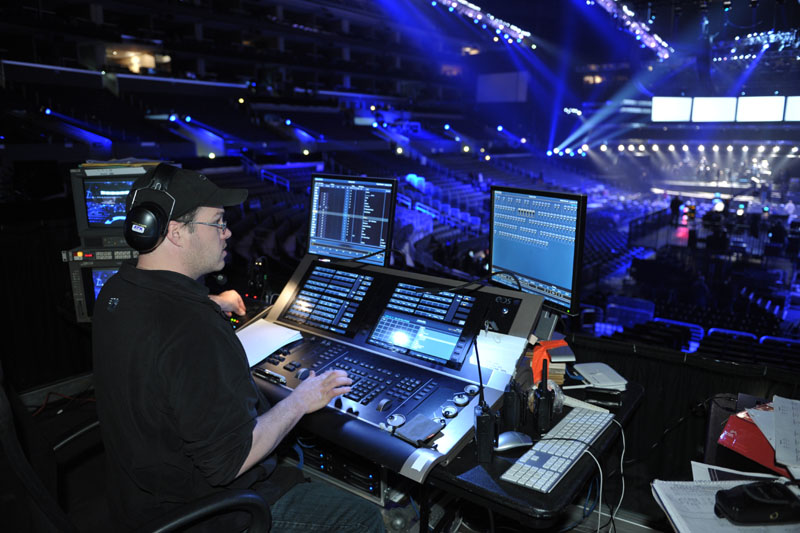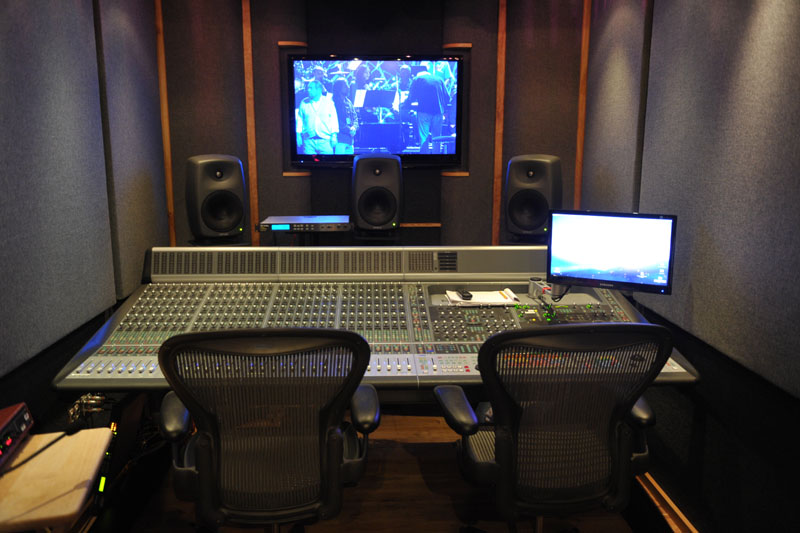Producing the 53rd Grammy Awards Concert
The Grammy Awards get their share of slings and arrows from hipsters, but as CD and more recently ticket sales continue to decline, finding ways to "eventize" the concert experience and create a recording of it that can offer continuous revenue streams going forward might be Grammy's biggest contribution yet to keeping the music business as we know it alive.
In 2010, 25.8 million viewers tuned into CBS for the Grammy Awards, broadcast live from the Staples Center in Los Angeles. In fact, the telecast attracted the largest Grammy TV audience since 2004. In another arena of the music business, however, that same year music concert touring hit a brick wall, with Pollstar's concert touring ticket sales report showing revenues for the 50 biggest grossing tours globally having fallen 12 percent, to $2.93 billion, from $3.34 billion in 2010. In the U.S., the world's single biggest music market, the drop-off was even steeper, with concerts here reporting a 15 percent decline to $1.69 billion.
But one of last year's concert tours is a kind of an overlap, one that might suggest a future path for a flailing music industry. Roger Waters' The Wall was no relapping of Pink Floyd but rather a bona fide event, which both won it Pollstar's Major Tour of the Year and Most Creative Stage Production awards and placed it second on the magazine's annual list of top-growing tours.
If events are what fickle music fans want, the Grammy Awards are perhaps the best synthesis of broadcast and live concert ever, and those who have been pulling its technical strings for decades are already seeing some convergence. And considering this year's numbers-according to the Wall Street Journal, viewership was up three percent from a year ago and up 57 percent from the show's low point in 2007, which had only 17 million viewers just one week after the Super Bowl set an all-time record for the largest TV audience for a single telecast in the U.S., with 111 million viewers—events are becoming big-time once again.
"The Grammys are a broadcast event that happens to be a live concert, and that's happened as we've been able to add more and more musical performances to the show," says Doug Mountain, audio consultant to the National Academy of Recording Arts & Sciences and NARAS's Producers & Engineers Wing, which provides much of the show's sound technology talent. "In fact, I think live concerts in some ways try to emulate what we can do here in terms of the sound and the overall show production."
Bob Dickenson of Full Flood, the Grammy Awards lighting director, agrees and even cites a Ricky Martin tour that was the first to a large, LED-based segmented cyclorama as a stage set, something that Dickenson introduced on the Grammy broadcast the year before. "The Grammy Awards show doesn't just reflect the state of the art of music on stage, but it very much tries to lead it, too," he says.

An Industry Affair
The Grammy Awards telecast is, at its core, an industry affair, but at its heart it's a live concert. When Eric Clapton or John Mayer jumps up on stage during another artist's performance (impulsively or not), it transforms a straightforward show into an event, and that's what the Grammys strive to be, touting as many marquee-value names as possible in the run-up to the broadcast but leaving plenty of leeway for surprises, both planned and otherwise. The fact that there are enough elements to the show to allow the diversity that helps create the aura of an event-this year's performances ranged from Barbra Streisand to Katy Perry to Eminem and Lady Gaga-is due to an interesting technical evolution in the way sound is handled for the broadcast.
Doug Mountain recalls that record producer Phil Ramone and other NARAS technical leaders approached him 14 years ago to revamp the audio workflow of the show. At the time, the sound was completely analog: Two remote trucks handled the broadcast audio and as many as four Front of House (FOH) consoles were used for the live sound in Radio City Music Hall. "Each console had to be reset manually between each act, the FOH consoles were taking out two or three rows of seats each in the house, and you never could completely replicate the exact same settings that you had gotten in rehearsals," he explains. "This meant that we were limited to seven to eight acts for the entire show."
Over the course of the next several years, digital consoles were introduced to both broadcast and live aspects of the show, leading up to the Yamaha PM7D now used at FOH and the Avid Icon consoles in the Music Mix Minus remote truck (digital consoles allowed the audio crew to operate the entire show out of a single truck by the late 19990s). The snapshot and recall automation of these digital mixers meant that the parameters of each performer's rehearsals could be called up instantly, reducing the time in between performances.
This new speed led to staging innovations; starting with the show's move to the Staples Center in 2004, the stage has been split, with one side being used for one musical performance while the other is prepped for the next one, constantly switching back and forth. Backstage, musical instruments, scenery and props are all mounted modularly, on rolling risers, each with their own audio connectors.
